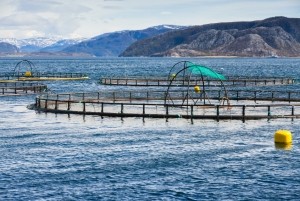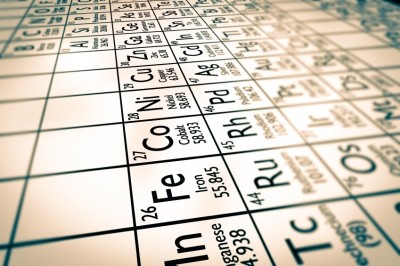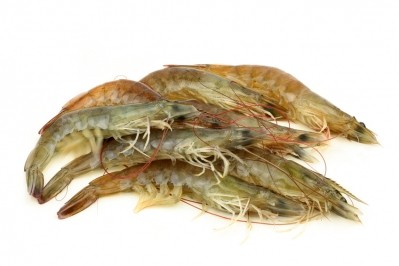Fluctuation in fishmeal prices trigger for innovation: Nutreco

“There are plenty of certified fisheries from which one can source fishmeal, or it can be produced from by-products such as trimmings, so sustainability in terms of sourcing is not an issue in terms of fishmeal.
“The challenge is with limited production and with events such as the impact of El Niño weather patterns on the fishing season in Peru, along with the rapid growth of global aquaculture production leading to greater demand for fishmeal; factors that have contributed to the volatility in fishmeal prices we have seen over the past few years.
“We want to avoid such price fluctuation, and ensure we have alternatives,” Dr Alex Obach, managing director at Nutreco’s fish feed division, Skretting Aquaculture Research Centre (ARC), told us.
Fishmeal free salmon feed
Skretting recently announced an R&D breakthrough with its MicroBalance feed formulation – the ability to formulate a fishmeal free salmon feed.
“We have been trying to reduce fishmeal levels over the past 15 years. If you look back 30 to 40 years ago, salmon feed contained around 40% fishmeal.
In 2000, we had it down to 25%, then in late 2009, we really cracked the code on plant based alternatives, lowering fishmeal levels in salmon diets to 15%, then to 10% two years later, 5% in 2014 and now, in 2016, we are fully flexible in how we meet a salmon company’s requirements – we can go 100% fishmeal free if that is what is sought,” said Obach.
It is not easy to replace fishmeal in salmon diets – It is a complex raw material made up of protein, amino acids and fatty acids. And to ensure quality it is not just sourced from one species, said the MD of Skretting ARC.
Vegetable alternatives, like soy protein concentrates, and gluten derived from either corn or wheat, are rich in some of the nutrients in fishmeal but deficient in others.
In addition to the conventional nutrition associated with fishmeal, it also provides a series of essential micronutrients. Each of these also has a minimum level at which it should be present. The Skretting researchers set about identifying substitutes for these micronutrients and defined parameters for their use in feed.
“It is about the nutritional density of raw materials used. The approach we have taken over the years is to ask what is the micronutrient we need next, how can we overcome the next limiting nutrient hurdle,” said Obach.
He said now as fishmeal prices fluctuate, the Skretting team can adjust or eliminate the fishmeal content of salmon feeds to obtain the most economic feed formulation.
A spokesperson for Nutreco said trial data showing performance and health metrics of salmon on the fishmeal free MicroBalance diet will be published in the coming weeks.
Fish oil substitutes
But the hunt is still on for replacements for fish oil in salmon feeds.
Almost 70% of fish oil in salmon diets today is being replaced by vegetable derived oils such as rapeseed oil and also by poultry oil, but in that respect, only in the Americas and Asia, said Obach.
“Fish oil serves two purposes in salmon feed – lipids as energy for fish to grow and the main marine source of long-chain omega-3 fatty acids, eicosapentaenoic acid (EPA) and docosahexaenoic acid (DHA) of which fatty fish have high requirements
The energy component of fish oil can be replaced by vegetable oils but the essential nutrients, EPA and DHA, are not so easily substituted,” he said.
A lot of investigation, said Obach, is underway in the area of fermentation of microalgae for DHA and EPA replacement.
“It could easily be within one to three years that we see affordable microalgae with good DHA and EPA levels coming onto the market,” said Obach.
Yields and productivity still need to be optimized and price per ton has a long way to go before microalgae could be placed on a competitive footing with fish oil.
But with an end to patent protection on the technologies involved, a lot more players have entered that market. This should support commercial scale and cost effectiveness of the process, said the Skretting MD.
GM technology
Genetically engineered plant oils are also a promising omega-3 fatty acid source, he said.
Monsanto has already developed a GM soybean oil rich in the omega-3 fatty acid, stearidonic acid, (SDA) which is said to be easier to convert to EPA in humans than alpha-linolenic acid (ALA), which is found in some conventional oilseed plants.
But it and other biotech players now are trying to go one step beyond and produce plants genetically engineered to contain EPA and DHA directly.
Obach said GM plant oils technology is, perhaps, now only five years away from commercialization. But challenges still lie ahead and also there is a lengthy registration process involved in getting such fish oil alternatives to market, he noted.
However, in terms of competition for land for crops cultivated for human consumption needs, GM plant oils might be less responsible long term than microalgae led lipid replacement in salmon diets, he said.
But the pace of acceleration in the area of feed innovation has quickened considerably, said Obach: “We can’t even imagine right now the range of animal nutrition that will be available in 20 years’ time.”



















